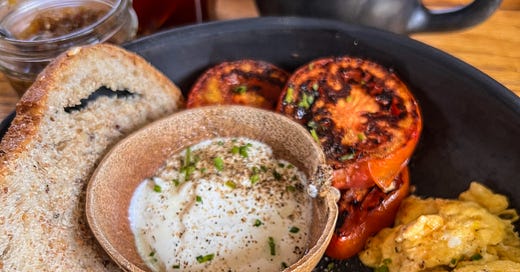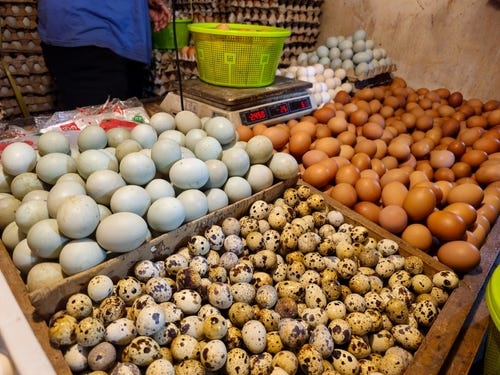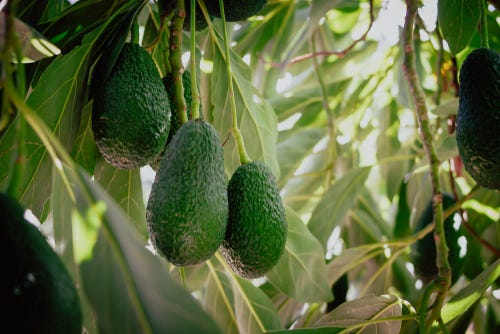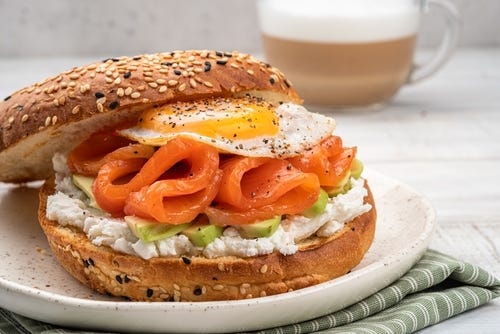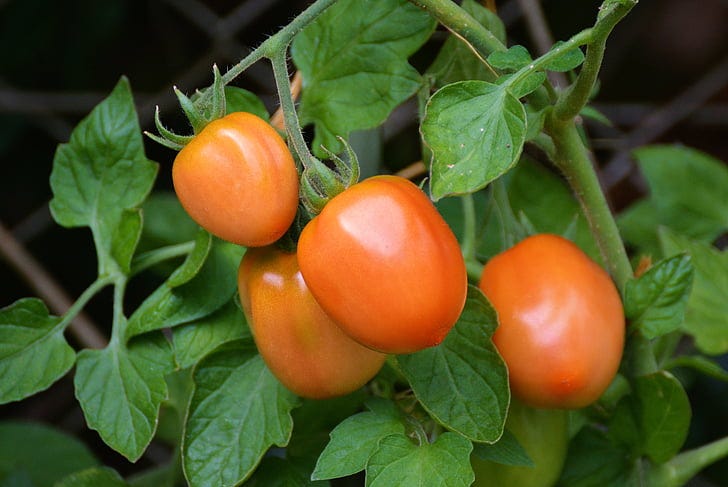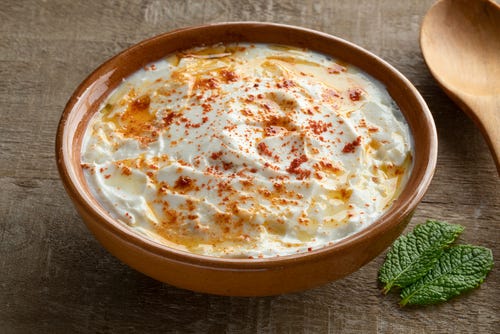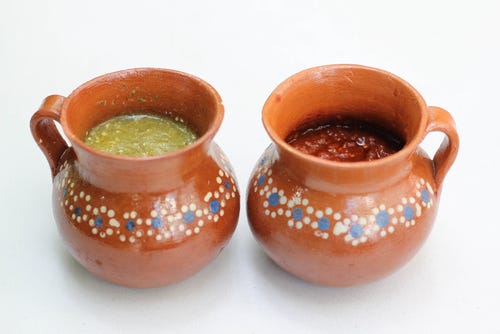My first meal out at a restaurant this year in San Miguel de Allende, Mexico, got me thinking about the ways in which different cultures meet and meld over time and space, sometimes peacefully and sometimes not.
I am living in a beautiful colonial city in the Central Mexican highlands. The location sounds obscure, but foreign visitors (along with domestic Mexican tourists) have long since discovered this magical city. So while the population is predominantly Mexican, local businesses also cater to foreign tastes.
For people living outside of their countries of origin, the longing for the foods of home is often as paramount as the longing for family. We are shaped by the food we grow up on, but also by the histories of those foods and how they came to predominate in a given place.
Each ingredient in my recent breakfast tells a story about agriculture, politics, economics, language, migration, colonialism, slavery, climate change, and the relationship of all of the above to the food we eat. Below is my breakfast dissected: the not-so-brief story of a meal in seven ingredients, multiple cultures, and 10,000 years of human history.
To skim this lengthy reflection, just check out the photos, key words, and block quotes, and then decide if there are some sections where you’d like to dig in for a deeper read.
EGGS
Key words: Industrial agriculture, the slave trade, Mexican slang.
Ah, the egg! A source of life (unless the chicken came first?). A complete protein suitable for human consumption. Indeed, eggs are eaten by people in virtually all of the world’s cultures, with the exception of Jains, many Hindu and Orthodox Sikh communities, some Jewish and Islamic traditions, and of course those who opt for a vegan diet. Archaeological evidence suggests that human beings domesticated chickens, mostly in order to consume their eggs, as long as 8,000 years ago in Southeast Asia, with the practice subsequently spreading to China and India between 2,000 and 3,000 years later.
People later brought chickens to western Eurasia and northwest Africa, and then Greece and Rome, from where they spread throughout Europe. During the colonial era, chickens were taken on ships to the New World, where they served as food first for sailors and later for colonial settlers. Chickens were also brought to the Americas through the Dutch and Portuguese slave trade. However, some have postulated that chickens may have arrived in America long before the arrival of Europeans, possibly by means of Polynesian seafarers.
CHICKENS LIKELY MADE THEIR WAY TO THE AMERICAS THROUGH COLONIALISM AND THE TRANS-ATLANTIC SLAVE TRADE. OR MAYBE THEY ARRIVED EARLIER, BY MEANS OF POLYNESIAN SEAFARERS.
In markets here in Mexico — indeed, in markets in most of the world outside of the United States — eggs are displayed unrefrigerated, and may be sold individually or in bags. And yes, the eggs are perfectly fine and safe to eat. Eggs are naturally covered by a thin protective layer, called a cuticle, that protects the inside of the egg from bacteria that could seep in through the shell.
In the United States, commercially produced eggs left unrefrigerated for an hour or two would be unsafe to eat. That is because the eggs are power-washed, supposedly to cleanse away bacteria, but the protective coating is also washed away in the process, which can therefore increase the chances that bacteria could invade the shell. The washed eggs must thereafter be refrigerated to maintain freshness, and once eggs are refrigerated, they must remain refrigerated throughout the entire supply chain.
Natural eggs have a shelf life of about three weeks, while refrigerated washed eggs have a shelf life of up to two months. So it’s not terribly surprising that U.S. agribusinesses would opt for a process that adds expensive, unnecessary steps (washing and refrigeration) for the benefit of longer shelf life (more profit!). It’s kind of like processing the natural nutrients out of the gain used to make bread in order to extend shelf life, and then adding back chemical nutrients (along with artificial preservatives and stabilizers) to replace the lost nutrition. (More on bread below.)
IN THE UNITED STATES, EGGS MUST BE REFRIGERATED BECAUSE THEY ARE TOO CLEAN.
Scrambled eggs are called huevos revueltos in Spanish. Vuelto means “turned,” so I guess re-vuelto would technically mean turned and then turned again. In slang, revuelto means “messy,” “mixed up” or “chaotic.” The eggs I ate for breakfast were none of the above, but were perfectly scrambled and creamy.
In Mexico, when ordering eggs in a restaurant, it is polite to ask for a huevo, singular, rather than huevos, plural. That is because the latter is slang for two somewhat egg-shaped parts of the male anatomy. Best not to be asking for those in polite company.
It also bears mentioning that the price of eggs may have played a decisive role in the 2024 U.S. presidential election.
AVOCADOS
Keywords: Cartels, climate change, guacamole, the Super Bowl.
Some avocado-related headlines:
Avocado Goldrush Links U.S. Companies with Mexico’s Deforestation Disaster
Are U.S. Avocado Buyers Financing the Cartel Conflict in Mexico?
Mexican Avocado Scarcity Affects Super Bowl Guacamole
Avocados have been having quite the long, Instagrammable moment. Avocado toast, once an unusual delicacy, can now be found at fancy restaurants, small cafes and greasy diners around the world. And guacamole, of course, is ubiquitous.
But there is a dark side to the avocado trade.
MEXICAN CARTELS HAVE BEEN SUPPLEMENTING THEIR DRUG-SMUGGLING INCOME BY EXTORTING AVOCADO GROWERS.
Mexico supplies about 80 percent of the avocados eaten in the United States, and most of them come from the state of Michoacán. During the COVID-19 pandemic, when drug smuggling paths were disrupted, organized crime in Mexico looked for other sources of income. In Michoacán, violent cartels started supplementing their drug income by extorting avocado growers. In fact, in 2022, the United States briefly suspended the importation of avocados from Mexico after a U.S. plant safety inspector in Mexico received a text message threatening his life.
The suspension, which was issued on the eve of that year’s Super Bowl, was quickly rescinded. Because what would the Super Bowl be without guacamole?
Apart from the human toll, the cultivation of avocados takes its toll on the land as well. It takes about 12 times more water to grow an avocado than it does to grow a tomato. Just one avocado needs about 320 liters of water on average. The growing worldwide demand for avocados is also linked with deforestation in already drought-stricken parts of Mexico. Volatile climatic conditions in other avocado-growing countries including Burundi, Chile, Peru, Spain and South Africa are leading to drops in productivity, which in turn pushes prices up.
IT TAKES ABOUT 320 LITERS OF WATER TO GROW A SINGLE AVOCADO.
The avocado has been consumed in Mexico for 10,000 years, and is thought to have been domesticated by Mesoamerican tribes about 5,000 years ago. For perspective, the wheel was also invented about 5,000 years ago (by the Sumerian people in Mesopotamia, in what is modern-day Iraq). Different cultures, different priorities! The Aztecs believed consuming avocados made you strong, and the Mayans revered avocados enough that the fourteenth month on the ancient Mayan calendar (K’ank’in) is represented by the glyph (symbol) for avocado. The Spanish conquistadors brought the avocado back to Spain from Mexico around 1600.
My breakfast contained an entire sliced avocado, and it was perfectly ripe and delicious. Avocados are nutritious — high in healthy fats, fibers, vitamins and minerals — so they are a good food choice. But it’s worth considering the human and ecological cost of your next avocado toast.
Incidentally, the word avocado (aguacate in Spanish) derives from ahuacatl in the Náhuatl language, which the indigenous Nahua people use to refer to male, um, huevos.
SMOKED SALMON
Keywords: Yiddish, bagels and lox, sashimi, gringos.
It wasn’t until after my family moved to New York City from California when I was eight years old that I first tasted smoked salmon. And I was probably much older before I tried it since I was a picky eater.
New York is famously the home of a classic treat featuring cured salmon, but you’d never order bagels with salmon in New York. It’s called “bagels and lox,” thank you very much, with the word “lox” derived from the Yiddish word laks. For this reason, bagels and lox are often thought of as Jewish food, and indeed bagels originated in the Jewish communities of Poland, though the addition of lox occurred in Manhattan’s Lower East Side.
Lox is primarily salt-cured, usually from the fatty salmon belly, and has a salty taste and a rich texture. Smoked salmon is different, because while it is salt-cured, it’s also smoked, and it can come from any part of the fish. As a practical matter, bagels are often served with smoked salmon rather than lox.
NEVER ORDER A BAGEL WITH SALMON IN NEW YORK! IT’S CALLED “BAGELS AND LOX,” THANK YOU VERY MUCH — WITH THE WORD “LOX” DERIVING FROM THE YIDDISH LAKS.
When my first husband and I were living in Brooklyn in our 20s, subsisting on a meager graduate student budget, we would go to Zabar’s on Manhattan’s Upper West Side and buy “salmon tips” — the leftover edges from slices of lox that were sold for a pittance at the deli counter. It made for a lumpy bagel filling, but the price was right for a cheap, tasty protein and we couldn’t afford fancy sliced lox.
As a teenager, I had lived in Denmark for a year, and there I encountered gravlax, which is salmon cured with salt, sugar and dill, but not smoked. It is served in thin slices, and has a milder fish taste, closer to the salmon sashimi that I later encountered when I moved to Japan in the early 1980s. Sushi and sashimi later took the United States, and much of the rest of the world, by storm. Today, I can even eat fine sashimi prepared by Mexican sushi chefs in a high-end Japanese restaurant in Central Mexico.
The climate in Mexico is not amenable to the large-scale production of salmon, so while some salmon is caught in the Gulf of Mexico, virtually all salmon available in Mexico is imported, mostly from Chile or Norway, and salmon does not traditionally play much part in Mexican cuisine.
All of this begs the question: what was salmon doing next to my breakfast eggs in a restaurant in Mexico? Although this particular restaurant (Rústica) tends to cater to a mixed clientele of Mexicans and foreigners, I’d venture to say that smoked salmon used in this manner is meant to cater to the foreign population, aka the many “gringos” living in this Central Mexican city.
BREAD
Key words: Starch, maize, nutrition, nixtamalization.
Bread (wheat) is the staff of life. Or is it rice? Or perhaps maize (corn if you’re from the United States)? How about sorghum or millet or cassava? Every culture has a starchy staple that serves as the foundation of its cuisine.
In many East Asian cultures, rice is such a daily staple that instead of greeting one another with an American-style “how are you?” people say something like “have you eaten rice yet?”
In the West and the Middle East, bread was traditionally made with just three ingredients: flour, water and yeast (or sometimes just flour and water). But nowadays, a packaged loaf of processed white bread, still a very popular type of bread in the United States, can easily contain as many as 20 ingredients, including salt, sugar, fats and oils, as well as a long list of chemical preservatives and stabilizers. I grew up on this awful American bread. My mother used to make my brother and me sandwiches — peanut butter and jelly, or sliced ham and processed cheese with mayonnaise — on white Wonder Bread. I remember liking to squeeze and roll the bread into a soft paste and then eat it like a ball of Play-Doh. The only reason Wonder Bread was even mildly nutritious is that the federal government provided subsidies to industrial bread makers to add vitamins and minerals in order to address packaged bread’s notorious nutritional deficiencies.
The Mexican staple, of course, is the tortilla. It is traditionally made with corn, but in some parts of the country wheat tortillas are popular, and wheat is always the tortilla of choice for burritos, quesadillas and fajitas. But corn is king in Mexico. Corn was first domesticated in Mesoamerica (present day Central and Southern Mexico, and Central America) as long as 10,000 years ago, and quickly spread throughout the Americas. Corn was deemed a sacred grain by native peoples and was thought to be a gift from the gods.
THOUSANDS OF YEARS AGO, INDIGENOUS INHABITANTS OF WHAT LATER BECAME KNOWN AS MESOAMERICA DISCOVERED HOW TO MAKE CORN — A SACRED GRAIN THOUGHT TO BE A GIFT FROM THE GODS — NUTRITIOUS AND DIGESTIBLE FOR HUMANS.
But corn is not naturally very nutritious or digestible for human beings without “nixtamalization,” a process of creating an alkaline solution with slaked lime (calcium hydroxide) and lye (potassium hydroxide) in which the corn is soaked to make it more easily ground and more nutritious. The history of nixtamalization goes back thousands of years in pre-Hispanic Mesoamerican culture. The term nixtamal comes from the Náhuatl word nextli meaning “ashes” and tamalli meaning “cooked corn dough.” Náhuatl, also known as Aztec or Mexicano, is a language (or group of languages) that has been spoken in Central Mexico since at least the seventh century CE.
In indigenous American agriculture, corn was planted along with beans and squash. Known as “companion planting” or the “Three Sisters” method, the cornstalk serves as a trellis for the beans to climb, the beans fix nitrogen in the soil, and the wide leaves of the squash plant provide shade, which helps keeps the soil moist and deters weeds.
I HAD NEVER TASTED CRUSTY, FLAVORFUL, NUTRITIOUS BREAD UNTIL I LEFT THE UNITED STATES FOR EUROPE.
In my delicious breakfast, I was served a slice of crusty, nutty-flavored European-style bread rather than the usual Mexican tortilla. I had never tasted bread like that — flavorful, full of texture, balancing loftiness and crunchiness all at once — until I left the United States for Europe. While I always found it puzzling that my friends in Japan would assume I was used to eating bread at every meal the way they would eat rice several times a day, I do appreciate a good bread, and I’m grateful to be living in an unusual Mexican town where a nice crusty bread is easy to find. If that were not the case, it would invariably be one of the things that would make me long for “home.”
By the way, did you notice the words “it’s sliced” on the side of the Wonder-Cut Bread truck? It turns out that Wonder Bread was one of the first sliced breads on the market when the Continental Baking company started selling Wonder Bread nationally. The invention of the commercial bread-slicing machine led to the widespread sale of sliced bread on the consumer market for the first time in 1928. The technology was considered positively revolutionary — which indeed it was if you keep in mind that it only took about 5,000 years from the invention of bread itself, in the Neolithic era, until humans invented a large-scale bread-slicing machine. And now you know the origin of the expression “it’s the best thing since sliced bread.”
TOMATOES
Key words: The Andes Mountains, poison, pizza.
I’m not a fan of raw tomatoes (what you might be more likely to call “fresh tomatoes”) due to their slimy texture, but these sliced breakfast tomatoes were lightly fried and had tasty patches of charcoal on the top. Like corn, the tomato is native to America. Specifically, it originated in the Andes Mountains of South America, and is thought to have been domesticated in pre-Columbian Mexico. We tend to associate tomatoes primarily with Italian cuisine, but in fact the Spanish brought the first tomatoes back to Europe in the 16th century. The word “tomato” comes from the Náhuatl word tomatl, and the fruit was eaten by the Aztecs as early as 700 CE. And yes, a tomato is a fruit, though apparently nutritionists also consider it to be a vegetable!
Europeans, and Americans in colonial times, originally considered tomatoes to be poison, as they resembled deadly nightshade … also known as belladonna, devil’s cherries, naughty man’s cherries, devil’s herb, and more. But once pizza was invented in Naples in the late 19th century, the popularity of tomatoes took off in Europe as well as in the United States. And no, my fellow New Yorkers, pizza was not invented in New York, although it evolved and was popularized in New York after Italian immigrants in the late 19th and 20th centuries brought their culinary traditions with them.
Finding tomatoes in my breakfast in Mexico is no surprise given this history. Tomatoes have come back to where they once belonged. Actually, they never left.
JOCOQUE
Key words: Lebanon, the Suez Canal, immigration, shawarma.
Jocoque is a Mexican fermented dairy product, similar to yogurt but having a taste more savory than sweet. It can be made from cow’s, sheep’s or goat’s milk. The consistency is somewhere between cream and yogurt. Its origins are uncertain but it is thought that jocoque derives from Lebanese cuisine, and my personal taste test indicated that jocoque is essentially a milder Mexican version of the Lebanese labneh, a type of strained yogurt. The word jocoque, however, comes from the Náhuatl word xococ, which means “something sour.”
I didn’t know until I started spending time in Mexico that there were significant waves of immigration from Lebanon to Mexico in the late 19th and early 20th centuries. Over 100,000 mostly Lebanese speakers of Arabic arrived in Mexico between 1892 (after the opening of the Suez Canal had caused the Lebanese silk industry to collapse) and the 1930s. Making up only five percent of immigration to Mexico in the 1930s, Lebanese are said to have been responsible for about half of immigrant contributions to Mexico’s economy.
JOCOQUE IS A LEGACY OF THE LEBANESE DIASPORA IN MEXICO, DATING BACK TO WAVES OF IMMIGRATION IN THE LATE 19TH AND EARLY 20TH CENTURIES.
Prominent Mexicans of Lebanese descent today include the actor Salma Hayek, who was the first Mexican to be nominated for an Academy Award for Best Actress (for her portrayal of Frida Kahlo in the 2002 biopic Frida), and Carlos Slim, a Mexican businessman who Forbes Magazine ranked as the richest person in the world from 2010 to 2013.
Jocoque is not the only popular Mexican food that derives from Lebanese, or Middle Eastern, cuisine. Tacos al pastor (originally called tacos árabes) are a well-liked street food that originated in the 1930s thanks to the Lebanese influence in Mexico. The principal filling is marinated pork, cooked on a vertical rotisserie in the style of shawarma, though in the mostly Muslim Middle East, lamb is used instead of pork. (However, most Lebanese-Mexicans are Christians.) Al pastor means in the style of a “herdsman” (cowherd or shepherd).
SALSA
Key words: Aztecs, Mayans, Incas, conquistadors, chili peppers.
No meal in Mexico would be complete without some kind of salsa. Okay, that is true in the United States as well, where salsa has become the best-selling condiment, above even ketchup! But the salsas in Mexico are much more varied and interesting.
SALSA HAS LONG BEEN THE BEST-SELLING CONDIMENT IN THE UNITED STATES.
Here, I was served two different salsas on the side, neither of which was a classic tomato-based salsa. One was salsa macha, whose principal ingredient is chili oil or vegetable oil, but also typically contains dried chilis, garlic and salt. The name comes from the verb machacar, which means to crush or mash in a mortar. Salsa macha is thought to originate from Veracruz, which happens to be where Hernán Cortés’ ships first landed in Mexico. (Veracruz means “true cross” in Spanish.) Interestingly, chili oil originated in China during the Ming Dynasty, after chili peppers were introduced in China from Latin America.
The other salsa served at this restaurant was some kind of salsa verde, green sauce, a cold uncooked sauce based on chopped vegetables (including tomatillos, a green-hued tomato, and green chili peppers) and herbs. Many other cultures have their own versions of salsa verde, including the Italian salsa of the same name, and chimichurri, an uncooked herb sauce originating in Argentina and popular throughout South America. But salsa verde in Mexico dates back to the Aztec Empire, when the Aztecs, Mayans and Incas all had traditions of making simple salsas using local vegetables, including tomatoes, chilis and herbs.
Like the tomato, Spanish conquistadors brought salsa (or the idea of salsa) back to Europe from the Americas. A 16th-century Spanish priest and missionary, Alonso de Molina, is credited with the creative idea of calling it by the Spanish word for “sauce.” Clever guy.
BONUS INGREDIENT: COFFEE
Key words: Colonialism, slavery, deforestation.
This wasn’t technically part of my breakfast entrée, but I would remiss not to mention the cup of coffee, with milk and sugar, that I drank with my breakfast.
According to legend, the coffee plant was discovered by a goat herder in Ethiopia around 850 CE, when he noticed that his goats would have sleepless nights after eating coffee beans. Coffee plants were first cultivated in Yemen soon thereafter. It wasn’t until the 1600s and 1700s that coffee began to be cultivated in Europe, Asia and the Americas. Roasted coffee beans were first sold on the retail market in the United States in 1865. Today, the United States is the largest importer of coffee in the world.
The cultivation of coffee has been associated with colonialism; slavery, both historical and present-day; stolen indigenous land; child labor; and deforestation.
Today, there are efforts to support sustainable coffee production using fair labor practices. But the centuries-long history of coffee still casts a dark shadow. I could say more about coffee — and about milk, and sugar — but I think I’ve said more than enough for now.
THE WHOLE ENCHILADA
This post wasn’t about enchiladas, although it took place in Mexico. But the story of my breakfast really does implicate the whole range of human history, for good and for ill. That’s a lot to ask of an order of scrambled eggs! But the point is that we (and the foods we eat) are the living heirs of centuries of experimentation, exploration and exploitation, whether we like it or not.
THE STORY OF A RANDOM BREAKFAST CAN IMPLICATE THE WHOLE RANGE OF HUMAN HISTORY. THAT’S A LOT TO TASK OF AN ORDER OF SCRAMBLED EGGS.
It would be easier to go through life without thinking about the morality of eating an avocado or drinking a cup of coffee. Most of the time, like most people, that is exactly what I do.
But the personal is indeed political. At a minimum, it is interesting and informative to recognize that you can find all the world on a random breakfast plate. At best, it can get us thinking about the choices we make in everyday life, and the possibility of making positive changes.


